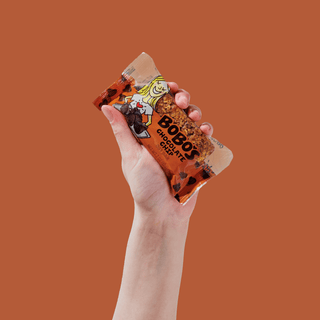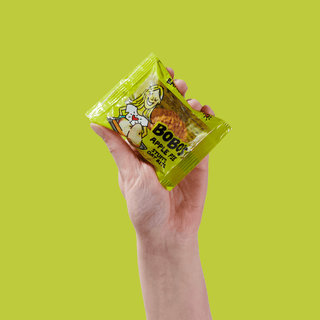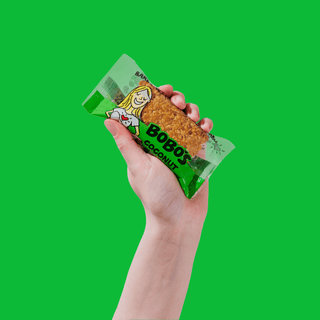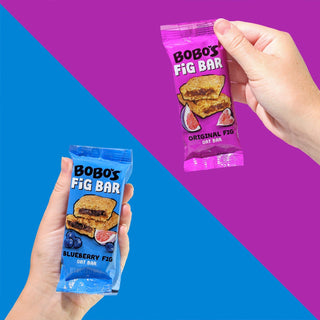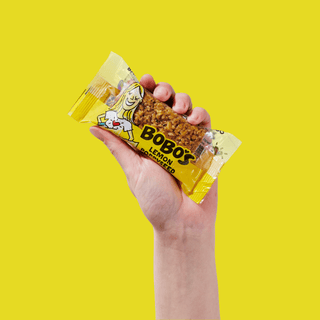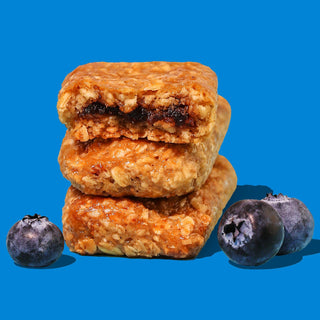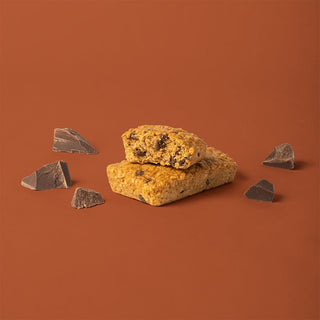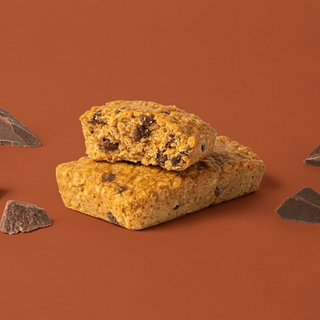Made with:
By Emma Caplan-Fisher
Many of us know that nostalgic, comforting feeling of a classic peanut butter and jelly sandwich all too well. This childhood staple can still make a simple lunch or snack for adults, too. After all, it's tasty, satisfying, and easy to make. But, is peanut butter and jelly good for you? The short answer is, it depends.
Here, we'll take a look at the nutritional benefits of a healthy PB&J and what you should look for to make your own, along with healthy additions for a more nutrient-packed sandwich.
Nutrition benefits of a healthy peanut butter and jelly sandwich
Peanut butter and jelly sandwiches typically contain three ingredients: bread, peanut butter, and jelly or jam. Since each comes with a different nutritional value, let's break it down by ingredient.
Bread
The nutritional value of bread will vary depending on the type you choose. Whole-grain bread is the most nutritious, with bran, endosperm, and germ higher in protein and fiber compared with other types of bread, along with the B vitamins, iron, folate, and magnesium it contains. Sprouted grain bread is a great option, as it contains fiber, vitamin E, vitamin C, and beta-glucan. Whole grain breads slow sugar absorption and keep you fuller for longer.
Sourdough bread is a good third choice. While it doesn't offer as much protein and fiber as the others, it comes with a lower glycemic index than white bread. Generally, foods with a lower glycemic index are the healthier option.
Peanut butter
As for peanut butter, it's cholesterol-free and a good source of protein, healthy and mostly unsaturated fats, and fiber. It also contains vitamin E and minerals like calcium, potassium, and magnesium. Natural peanut butter is the healthier choice, as it's lower in salt than the conventional type. When shopping, check nutrition labels to ensure there are no added ingredients.
Jelly or jam
Jelly and jam have a similar nutritional value and taste. However, jelly is made with fruit juice, while jam is made with fruit juice and pulp (crushed fruit). They both contain pectin, which can improve gut health. That said, since both are high in sugar, you should consume them moderately. Check labels and choose products that say no added sugar (or that contain no glucose, sucrose, dextrose, or fructose).
Since we've established that not all peanut butter and jelly sandwiches are equally made with our health in mind, let's get into how to make a healthy PB&J of your own.
How to make a healthy PB&J
Variations of each ingredient in a peanut butter and jelly sandwich will be better or worse for you. Depending on the specific bread, peanut butter, and jelly or jam you choose, you can make sure you're getting a nutritionally balanced sandwich.
Whole grain bread
Opt for high-fiber bread like whole-grain or sprouted grain. These options are easier to digest, higher in nutrients like amino acids and B vitamins, and lower in phytates than refined grain breads.
Natural peanut butter
Besides peanuts, oil, sugar, salt, and preservatives are added to many peanut butters you'll find at the grocery store. For the healthiest option, you'll want to choose a natural product without trans fats and with only peanuts added.
For a new spin on an old classic, consider almond butter vs peanut butter, or try other nut or seed butter like cashew, sunflower seed, or pumpkin seed.
Low-sugar jelly or jam (fruit spread)
Be sure you're picking a 100% fruit spread with few ingredients, as opposed to a conventional jam or jelly, as they typically contain more added sugar. Fruit spreads already contain fructose, making the product naturally sweet. Read the labels and avoid anything with added sweeteners (including high fructose corn syrup).
Healthy additions to PB&J
It's easy to add extra, healthy flavors to your peanut butter and jelly sandwich for some added nutrients. For example, include slices of fresh fruit like banana, raspberries, or strawberries, add seeds like chia, hemp, or flax, or enjoy some cut-up veggies on the side.
Healthy alternatives to a PB&J sandwich
If you love PB&J sandwiches but just don't have time to make them when hunger strikes, don't worry. There are plenty of healthy alternatives for when you're on the go, like PB&J oat snacks, PB&J oat bites, or a peanut butter and jelly Stuff'd oat bar.
FAQs about PB&J
Is peanut butter and jelly junk food?
Not exactly, but there are certainly healthier versions of peanut butter and jelly sandwiches than others. The "junk food" version you can avoid is usually made with refined grain or white bread, high-sugar jam and jelly, and standard peanut butter with added ingredients.
Are peanut butter and jelly sandwiches healthy?
Peanut butter and jelly sandwiches can be healthy and part of a well-balanced diet — when they're prepared right. Choose whole-grain bread over white bread, low-sugar jam over jelly, and natural peanut butter over the conventional kind. It's also crucial to make sure you're getting the right portion size for your body and dietary needs.
Are PBJs healthy for weight loss?
Since a PB&J can be nutritious, it can also be part of a well-balanced diet and aid in weight loss. Just be sure to watch the portion size, since these sandwiches can come with a higher amount of calories than other meal options (like salads).
Is peanut butter gluten free?
While a lot of peanut butter is gluten free (because peanuts are naturally gluten-free), some peanut butters might have cross-contaminated with gluten-containing ingredients. This can be an issue if you're allergic or sensitive to gluten, so look for natural peanut butter that says “gluten-free” on the label.


